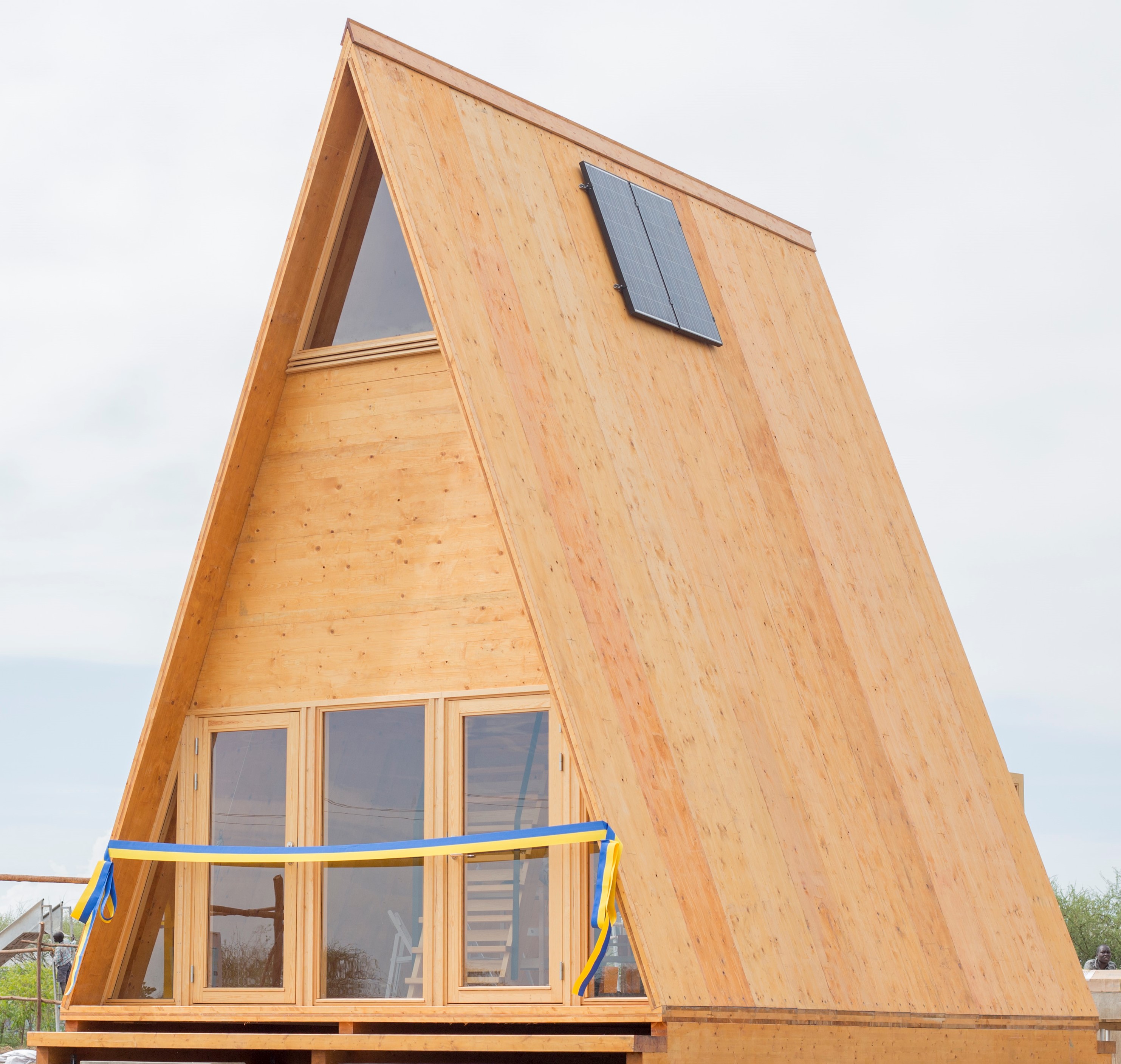Kalobeyei Settlement, Turkana County, Kenya, 11 October 2021— In line with its commitment to help cities and settlements implement sustainable programmes that strengthen spatial planning and support humanitarian-development, UN-Habitat this month inaugurated a community hall benefitting thousands of residents in Kakuma-Kalobeyei.
Funded by the Government of Japan, UN-Habitat expertise was fundamental in the design and incremental delivery of the Kalobeyei Settlement Public Space in Village 2. The community hall was donated by the Swedish development company ARVET Developers.
Other partners included Peace Winds Japan, AAR Japan, GIZ Sports 4 Development, wood products company Setra, UNHCR, and the Turkana County Government.
The community hall and the public space provide an opportunity for building social cohesion, promoting cultural exchange, a platform for community activities, supporting the integration of host and refugee communities.
In close coordination with the settlement officials, UN-Habitat experts ensured the community’s needs were taken into consideration to also deliver children’s playgrounds and congregational areas for youth, women and men in the settlement to support the integration of communities.

Setra Chief Executive Officer Katarina Levin said using renewable materials such as cross laminated timber/wood is a milestone for construction building techniques and material in Kenya.
Turkana County Governor Josephat K. Nanok applauded the planning process and stressed “the need for partners to scale-up efforts to address development challenges. Spatial planning is an important tool which has been embraced by the County Government to guide investments in the region, and we should enhance partnerships to strengthen the county’s spatial planning function.”
Owing to the pandemic restrictions, the virtual inauguration ceremony for the delivery of the community hall, which used local labourers and was built in only one month, was attended by Turkana County Government officials, Ministry of Interior’s Refugee Affairs Secretariat (RAS), ARVET Developers, community representatives and UN-Habitat field officers.
“We thought this would be a Christmas present for the residents in Kalobeyei last year, but due to the pandemic restrictions, we finally managed to implement the hall in this quarter of the year. We thank the many positive people in UN-Habitat and our partners in Sweden for this inauguration," said Arne Olsson, Chief Executive Officer of ARVET Developers.
Highlighting the role of children in bridging the gaps among the settlement’s various groups, Community Centre Management Representative Ojulu Opiew said, "You cannot differentiate which child belongs to the host or refugee community - and this is what we wanted to achieve with the public space community.”
A ribbon cutting ceremony was conducted before participants moved into the community hall to explore the interior. Ivan Segato, from ARVET Developers who participated in the building and installation process, introduced the design elements and took the participants for a tour around the space.
The Chairwoman of Kalobeyei Village 2, Warki Ojulu, said, "This is commendable work; we are so happy for the swings for the children and this structure. Thank you all for the projects that you have helped us with."
The architects Gipp Arkitektur chose a design that reduced a building to its essential elements – roof and a floor slab. A triangular cross section gives both structural efficiency, simplicity in construction, and interesting and prominent spatiality, making the building a focus point in the surrounding area.
The design of the timber elements made it possible to construct the building by a team of supervised local workers using only hand tools. The building’s design is intended to reopen to different usages over time.